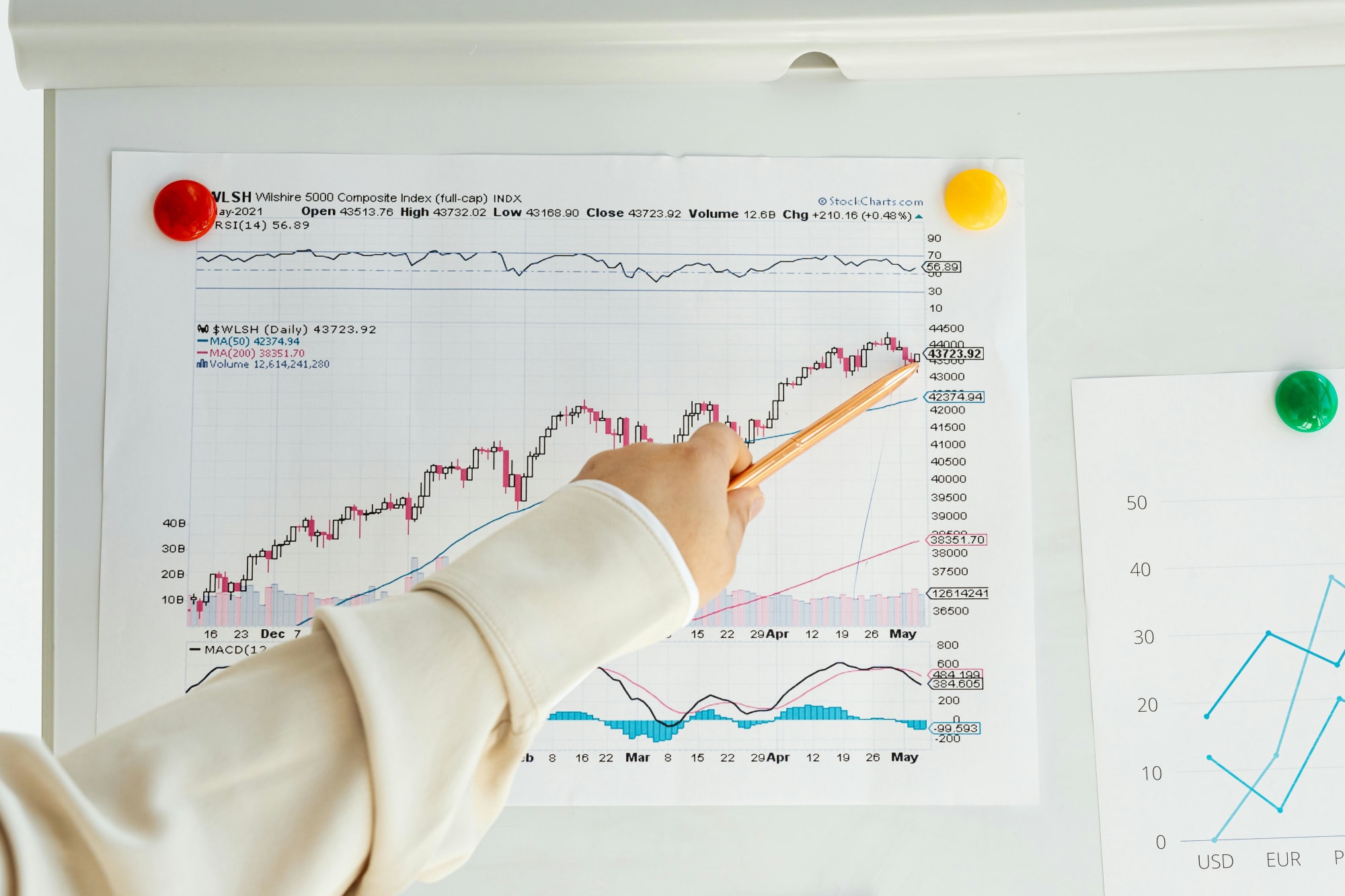Invest
There’s something very wrong with the economy and it’s not just the coronavirus
Invest
There’s something very wrong with the economy and it’s not just the coronavirus
While COVID-19 has received more than its fair share of the blame for weak economic numbers, there are underlying forces the virus is hiding, suggests a fund manager.
There’s something very wrong with the economy and it’s not just the coronavirus
While COVID-19 has received more than its fair share of the blame for weak economic numbers, there are underlying forces the virus is hiding, suggests a fund manager.

According to Franklin Templeton’s director of Australian fixed income, Andrew Canobi, it is consumer spending stopped in late 2019 which will force the central bank to deliver monetary stimulus, not the coronavirus.
“The novel coronavirus, COVID-19, has received more than its share of the blame for a range of market moves, and it is true that the fallout from this on growth will likely be severe and far exceed the overly optimistic utterances of central bankers and government alike made in recent weeks,” Mr Canobi said.
While the impact has been felt on the sharemarket, with over $100 billion being wiped off the sharemarket, Mr Canobi argues there are real problems in the economy that the bond market is showing.
“The bond market always tells a story. The general level of term bond yields is communicating a somber message in terms of potential growth and inflation,” Mr Canobi continued.

“It is doing this because the marginal dollar is being saved rather than borrowed, which remains disinflationary. In an over-levered global economy, the price of money continues to have little impact on demand to borrow and invest or consume, even as extreme, even negative yields, abound.”
Due to this, the fund manager believes monetary policy will be used to stimulate the economy, but it will not be because of the coronavirus that the central bank will act.
This is after claims by the Australian government that its surplus which it previously promised may not happen as the impact of the coronavirus plagues the Australian economy.
“A key reason why monetary policy lacks its traditional potency is not because it is ineffective per se but because its role has changed. Its ability to bring forward future demand from the future to the present is limited if future demand is already exhausted. So, its role is not to stimulate demand to borrow, but to expedite deleveraging in order to shorten the balance sheet repair process,” Mr Canobi said.
He concluded: “While hopes and expectations of any ‘V-shaped’ bounceback from the COVID-19 epidemic are increasingly being fed through the shredder, the lingering disinflationary impulse remains in place for now, which is the real reason why we should see more monetary stimulus in 2020.”
nestegg has previously discussed how a leap year could save the Australian economy.
About the author

About the author


Economy
RBA's hawkish stance reflects inflation concerns, State Street economist comments
In a recent statement, the Reserve Bank of Australia (RBA) has signaled a hawkish stance on interest rates, drawing insights from financial experts about the implications for Australia's economic ...Read more

Economy
Navigating the inflation maze: How CFOs can outsmart economic hurdles in Australia
Fresh inflation data have cooled expectations of near-term rate cuts in Australia, intensifying pressure on margins, capital allocation and demand. Rather than wait for monetary relief that may not ...Read more

Economy
Inflation concerns rise as Australia's CPI climbs to 3.8% in October
Australia's latest Consumer Price Index (CPI) figures have sent ripples through the economy, with headline inflation accelerating to 3.8% year-on-year in October, up from 3.6% in September. The data, ...Read more

Economy
October CPI results pose challenges for RBA’s monetary policy stance
In a surprising turn of events, the October Consumer Price Index (CPI) data has raised eyebrows among economists and market strategists, revealing stronger-than-expected inflationary pressures in ...Read more

Economy
Global deal activity declines by 6% amid economic uncertainty, reports GlobalData
In a year characterised by economic turbulence and evolving market conditions, global deal activity has witnessed a notable downturn during the first ten months of 2025. According to GlobalData, a ...Read more

Economy
Australia’s softening labour market puts another RBA cut in play — here’s what business should do now
A four-year high in unemployment has revived expectations the Reserve Bank could deliver another rate cut as soon as November. With quarterly GDP growth running at 0.6 per cent and annual growth at ...Read more

Economy
Rising CPI reinforces RBA’s stance as rate cut expectations remain: State Street
State Street Global Advisors says the Reserve Bank of Australia (RBA) is likely to hold its current policy outlook following the release of September quarter inflation data, which showed an unexpected ...Read more

Economy
NSW SES boosts tsunami preparedness ahead of World Tsunami Awareness Day
As World Tsunami Awareness Day approaches on 5 November, the New South Wales State Emergency Service (NSW SES) is ramping up efforts to enhance tsunami preparedness along the east coastRead more

Economy
RBA's hawkish stance reflects inflation concerns, State Street economist comments
In a recent statement, the Reserve Bank of Australia (RBA) has signaled a hawkish stance on interest rates, drawing insights from financial experts about the implications for Australia's economic ...Read more

Economy
Navigating the inflation maze: How CFOs can outsmart economic hurdles in Australia
Fresh inflation data have cooled expectations of near-term rate cuts in Australia, intensifying pressure on margins, capital allocation and demand. Rather than wait for monetary relief that may not ...Read more

Economy
Inflation concerns rise as Australia's CPI climbs to 3.8% in October
Australia's latest Consumer Price Index (CPI) figures have sent ripples through the economy, with headline inflation accelerating to 3.8% year-on-year in October, up from 3.6% in September. The data, ...Read more

Economy
October CPI results pose challenges for RBA’s monetary policy stance
In a surprising turn of events, the October Consumer Price Index (CPI) data has raised eyebrows among economists and market strategists, revealing stronger-than-expected inflationary pressures in ...Read more

Economy
Global deal activity declines by 6% amid economic uncertainty, reports GlobalData
In a year characterised by economic turbulence and evolving market conditions, global deal activity has witnessed a notable downturn during the first ten months of 2025. According to GlobalData, a ...Read more

Economy
Australia’s softening labour market puts another RBA cut in play — here’s what business should do now
A four-year high in unemployment has revived expectations the Reserve Bank could deliver another rate cut as soon as November. With quarterly GDP growth running at 0.6 per cent and annual growth at ...Read more

Economy
Rising CPI reinforces RBA’s stance as rate cut expectations remain: State Street
State Street Global Advisors says the Reserve Bank of Australia (RBA) is likely to hold its current policy outlook following the release of September quarter inflation data, which showed an unexpected ...Read more

Economy
NSW SES boosts tsunami preparedness ahead of World Tsunami Awareness Day
As World Tsunami Awareness Day approaches on 5 November, the New South Wales State Emergency Service (NSW SES) is ramping up efforts to enhance tsunami preparedness along the east coastRead more








